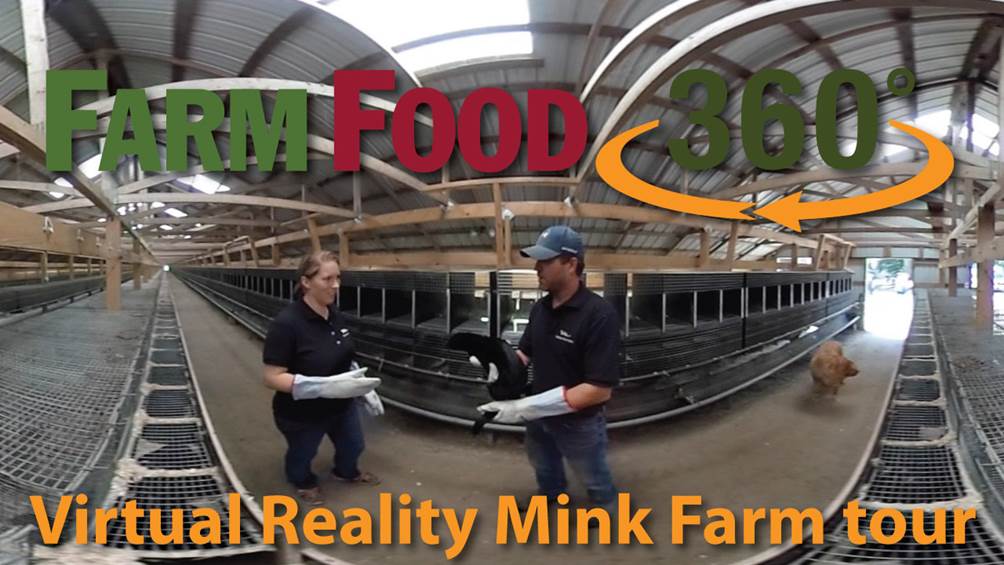Mink Farm Videos
In this 360 video tour, you’ll get to see inside a working Canadian mink farm and learn all about how mink are cared for, what they eat, where they live, and how Canadian mink farmers produce high-quality products for the industry. Enjoy your visit! Watch the video to learn more and visit www.FarmFood360.ca to tour other Canadian farms and food processing facilities.

360 Mink farm tour
In this 360 video tour, you’ll get to see inside a working Canadian mink farm and learn all about how mink are cared for, what they eat, where they live and how Canadian mink farmers produce high quality products for the industry. Enjoy your visit.

Life as a Mink Farm Family
Working with family every day is not something most of us will be able to experience. This Ontario farm family have been raising mink for over 70-plus years. Ross Sr., Ted and Elaine, Cassie, Jenny and Dean all work together on their mink farm with the goal of raising high-quality Canadian mink in the most comfortable and humane conditions possible.

Caring for Mink
Taking care of mink is a big job but these farmers are happy to do it. In this video, you’ll visit Dean’s Canadian mink farm and see exactly what it’s like to care for mink. You’ll learn what mink eat, where they live, and why their care and comfort are top priority for Canadian mink farmers.

Fur and Fur Products
The Canadian mink industry is about a lot more than fur. In this video, you’ll meet Jenny and Ted, Canadian mink farmers, and hear about all the different products that the mink farming industry creates. Whether it’s fur for high fashion or oil for biodiesel, there are several different uses for Canadian mink.

Environmental Sustainability
Canadian mink farming is an industry proud to be environmentally sustainable. That means that mink are cared for and raised in a manner that ensures nothing is wasted. In this video, you’ll visit a Canadian mink farm and learn all about what Canadian mink farmers do to reduce, reuse and recycle to lessen their carbon footprint and preserve the environment for future generations.
Quick Canadian Mink Farm Facts
- Mink farming is environmentally sustainable. Mink eat nutritious left-overs from human food production, such as food waste and parts of animals that we do not eat. Manure, bedding and carcasses are composted to produce organic fertilizers to replenish the soil. Carcasses are also used to produce bio-fuel and mink fat produces oil used to condition leather, in cosmetics, and as a fine lubricant.
- Farmed animals like mink have constant access to nutritious food and clean water, protection from predators and extreme weather, and veterinary care when needed.
- Canadian mink farmers provide excellent nutrition and care to their animals. This is assured by the Code of Practice (animal welfare standards) which is based on years of scientific research.
- Canadian mink pelts are sold through auction houses to fur buyers/manufacturers from all over the world - particularly China, Russia, Korea and Greece.
- Fur farming provides important employment for rural communities across Canada, employing hundreds of families and thousands of people, directly and indirectly.
- Wild mink spend up to 80% of their time in small, underground dens. Farmed mink spend a similar time in their nest boxes, entering their larger pens to eat, drink and exercise.
- Farmed mink are often given toys to play with. This may include golf balls, pieces of pipe, or anything else that the mink can safely chew on or manipulate with its paws!
